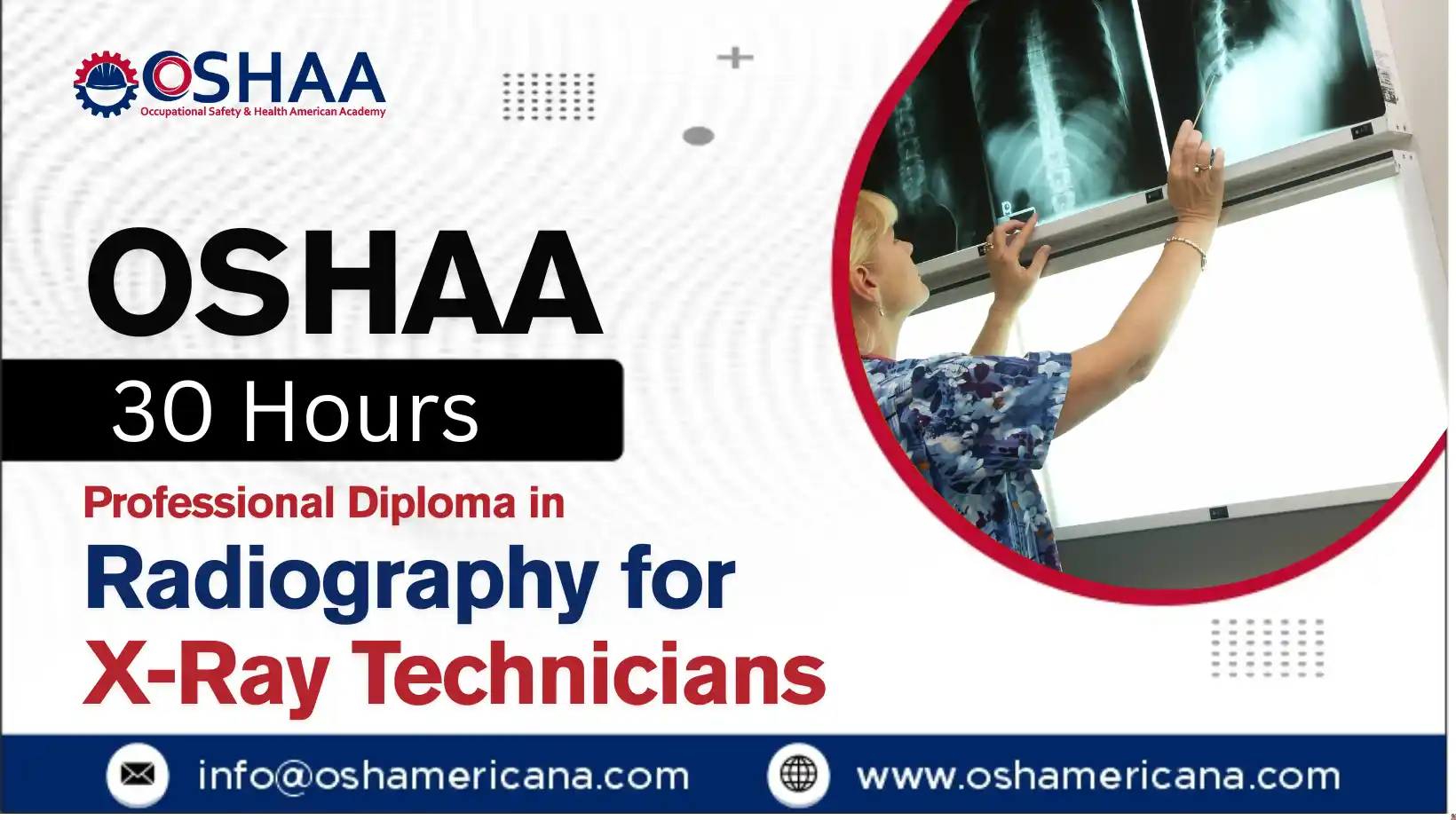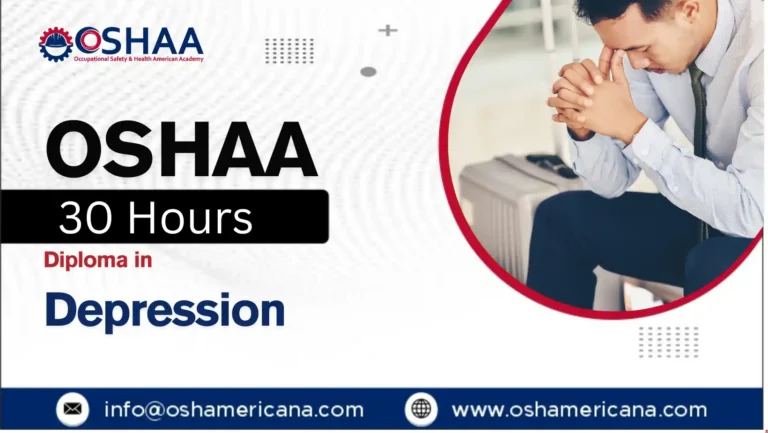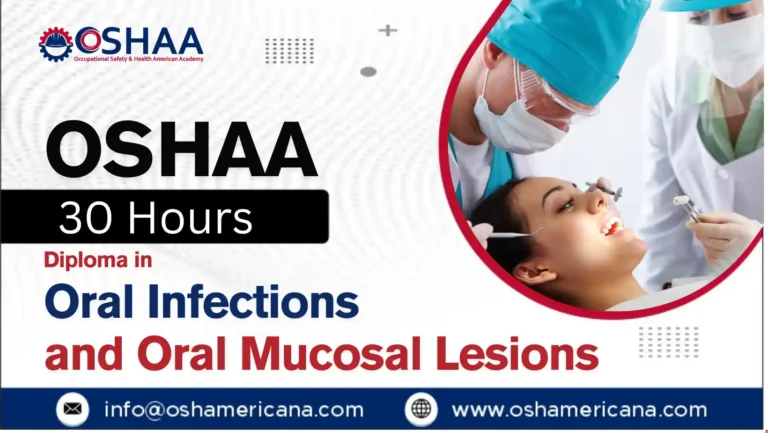The OSHAA 30-Hours Diploma in Radiography for X-Ray Technicians is a professionally designed training programme that equips participants with the essential knowledge, technical skills, and ethical understanding required to perform radiographic imaging safely, accurately, and in compliance with healthcare regulations. Developed by OSHAA to meet recognised medical imaging standards, this course offers a balanced combination of theoretical learning and practical application, preparing participants to work effectively in modern diagnostic environments.
The curriculum covers the core principles of radiography, including radiation physics, X-ray generation, and image formation. Participants learn correct operation, calibration, and maintenance of X-ray equipment while applying safety protocols to minimise radiation exposure for patients and healthcare professionals. Training focuses on accurate patient positioning techniques, anatomical knowledge relevant to imaging, and the use of exposure parameters to produce high-quality diagnostic images.
Participants gain the ability to evaluate radiographic images, identify common imaging errors, and apply corrective measures to improve diagnostic accuracy. The course includes quality assurance procedures that help maintain consistent imaging standards while following best practices. Legal, ethical, and regulatory frameworks are addressed in detail, covering patient confidentiality, informed consent, professional conduct, and adherence to health and safety legislation.
The programme also builds professional communication skills, enabling participants to provide clear instructions, offer reassurance, and maintain patient comfort throughout procedures. This approach ensures both technical precision and a high standard of care in clinical settings.
The OSHAA 30-Hours Diploma in Radiography for X-Ray Technicians is suited to those seeking entry into the medical imaging field or wishing to strengthen their role within healthcare. Completion of this programme prepares participants to operate X-ray equipment with accuracy, follow strict safety measures, work as part of multidisciplinary teams, and contribute to accurate diagnoses through high-quality radiographic services.
OSHAA 30-Hours Diploma in Radiography for X-Ray Technicians
Study Units
Learning Outcomes
Fundamentals of Radiography and Imaging Principles (3 Hours)
- Understand the basic concepts and scope of radiography in medical imaging
- Explain the principles of image formation and interpretation
- Recognise the role of radiography within diagnostic healthcare services
Radiation Physics and X-Ray Production (3 Hours)
- Explain the physical principles behind X-ray generation and propagation
- Identify the components and functions of X-ray generating systems
- Understand how exposure factors influence image quality and patient safety
Anatomy for Radiographic Positioning (3 Hours)
- Identify anatomical structures relevant to common radiographic procedures
- Apply anatomical knowledge to achieve accurate patient positioning
- Understand the relationship between anatomy and optimal image capture
Operation and Calibration of X-Ray Equipment (3 Hours)
- Operate X-ray machines following standard protocols
- Perform basic calibration procedures to maintain equipment accuracy
- Troubleshoot common operational issues with radiography equipment
Radiation Protection and Safety Protocols (3 Hours)
- Apply principles of radiation safety for patients, staff, and self
- Implement ALARA (As Low As Reasonably Achievable) guidelines
- Use shielding, monitoring devices, and protective measures effectively
Patient Care, Comfort, and Communication in Radiography (3 Hours)
- Demonstrate effective communication with patients to ensure cooperation
- Provide comfort and reassurance during radiographic procedures
- Apply patient handling techniques that ensure safety and dignity
Radiographic Techniques for Different Anatomical Regions (4 Hours)
- Select appropriate radiographic techniques for various body parts
- Adjust positioning and exposure settings for optimal imaging results
- Identify and correct positioning errors during the procedure
Image Quality Assessment and Error Correction (3 Hours)
- Evaluate radiographic images for clarity, contrast, and diagnostic value
- Identify common image quality issues and their causes
- Apply corrective actions to improve suboptimal images
Legal, Ethical, and Regulatory Requirements in Radiography (3 Hours)
- Understand legal obligations and professional responsibilities in radiography
- Apply ethical principles to patient care and imaging practices
- Follow relevant national and international regulatory standards
Quality Assurance and Maintenance of Imaging Standards (2 Hours)
- Implement quality control procedures in radiographic practice
- Maintain records of equipment performance and calibration
- Ensure consistent compliance with imaging quality standards
- Equips participants with a solid foundation in radiographic principles and imaging techniques essential for professional practice.
- Enhances technical skills in operating, calibrating, and maintaining X-ray equipment to ensure accurate and reliable results.
- Strengthens understanding of radiation physics, safety protocols, and protective measures to safeguard patients and professionals.
- Develops proficiency in patient care, communication, and ethical conduct to improve the overall diagnostic experience.
- Trains participants in positioning techniques for different anatomical regions to achieve high-quality, diagnostic images.
- Improves competency in image evaluation, error identification, and corrective actions for enhanced diagnostic accuracy.
- Provides knowledge of legal and regulatory frameworks governing radiography to ensure compliance with industry standards.
- Builds capability in quality assurance practices to maintain consistent imaging standards and operational efficiency.
- Prepares participants for entry-level or advanced roles in diagnostic imaging departments across healthcare settings.
- Offers a professional qualification from OSHAA, enhancing career prospects and credibility in the radiography field.
This course is designed for participants who are seeking to develop or enhance their knowledge and skills in diagnostic radiography. It is suitable for:
- Participants aspiring to begin a career as X-ray technicians in healthcare settings.
- Participants currently working in medical imaging who wish to update their technical expertise and knowledge of best practices.
- Participants aiming to strengthen their understanding of radiation safety and patient care in radiographic procedures.
- Participants looking to meet professional development requirements within the healthcare and diagnostic imaging field.
- Participants pursuing a formal qualification to improve their employability and advancement opportunities in radiography.







